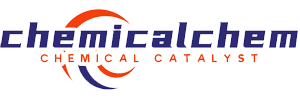
structural formula
| business number | 06rj |
|---|---|
| molecular formula | c2h6s2 |
| molecular weight | 94 |
| label |
dimethane disulfide, dimethyl disulfide, disulfide methane, methyl disulfide, 2,3-dithiabutane, dimethyl disulphide |
numbering system
cas number:624-92-0
mdl number:mfcd00008561
einecs number:210-871-0
rtecs number:jo1927500
brn number:1730824
pubchem number:24870743
physical property data
1. properties: light yellow transparent liquid, easily volatile, with sulfide odor.
2. density (g/ml, 25/4℃): 1.0625
3. relative vapor density (g/ml, air=1): undetermined
4. melting point (ºc): -85
5. boiling point (ºc, normal pressure): 109.7
6. boiling point (ºc, 5.2kpa): undetermined
7. refractive index (n/20/d): 1.5260
8. flash point (ºc): 24
9. specific rotation (º) : undetermined
10. autoignition point or ignition temperature (ºc): 300
11. vapor pressure (kpa, 25ºc): undetermined
12 . saturated vapor pressure (kpa, 60ºc): undetermined
13. heat of combustion (kj/mol): undetermined
14. critical temperature (ºc): undetermined
p>
15. critical pressure (kpa): undetermined
16. log value of oil-water (octanol/water) partition coefficient: undetermined
17. explosion upper limit (%, v/v): 1.1
18. lower explosion limit (%, v/v): 1.6
19. solubility: insoluble in water, soluble in ethanol and ether , miscible with acetic acid.
toxicological data
1. acute toxicity: rat (inhalation) lc50: 15,850μg/m3/2h
mouse (inhalation) lc50: 12,300μg/m3/2h
species unknown (not reported) ld50: 138 mg/kg
since the ld50 of table salt is 3,000 mg/kg, the acute toxicity of bpa is the same as that of table salt.
ecological data
do not allow large quantities of products that are slightly harmful to water to come into contact with groundwater, waterways or sewage systems. it is also toxic to fish and plankton in the water. do not discharge materials into the surrounding environment without government permission. to waterthe organic matter in � is poisonous.
molecular structure data
1. molar refractive index: 27.30
2. molar volume (cm3/mol): 89.4
3. isotonic specific volume (90.2k ): 213.0
4. surface tension (dyne/cm): 32.1
5. polarizability (10-24cm3): 10.82
compute chemical data
1. reference value for hydrophobic parameter calculation (xlogp): none
2. number of hydrogen bond donors: 0
3. number of hydrogen bond acceptors: 2
4. number of rotatable chemical bonds: 1
5. number of tautomers: none
6. topological molecule polar surface area 50.6
7. number of heavy atoms: 4
8. surface charge: 0
9. complexity: 6
10. number of isotope atoms: 0
11. determine the number of atomic stereocenters: 0
12. uncertain number of atomic stereocenters: 0
13. determine the number of chemical bond stereocenters: 0
14. number of uncertain chemical bond stereocenters: 0
15. number of covalent bond units: 1
properties and stability
1. stay away from oxides, reducing agents, and alkalis.
2. light yellow transparent liquid. there is a stench. insoluble in water, miscible with ethanol, ether and acetic acid.
3. exists in flue-cured tobacco leaves and smoke.
storage method
store in an airtight container in a cool, dry place. the storage area must be locked and the keys must be given to the technical experts and their assistants. avoid moisture and humidity. keep away from oxidizing agents, reducing agents, and do not store together with strong alkalis.
synthesis method
1. dimethyl disulfide is synthesized industrially using the dimethyl sulfate method. put the solid sodium sulfide and water into the reaction kettle, heat it, and control the temperature at 50~60°c to dissolve the sodium sulfide, then add moles of sulfur in batches, keep it warm for 1 hour, cool to 45°c, and start adding dimethyl sulfate dropwise. keep the reaction temperature between 40 and 45°c. after adding, keep the temperature for 1 hour to steam out the product dimethyl disulfide.
2. tobacco: fc, 40.
purpose
it is used in the synthesis of organophosphorus pesticide fenthion, the intermediate p-methylthioresorphenol of fenthionate, and the intermediate p-methylthiophenol of thiopyrophate. it can also be used as a purifying agent for solvents and catalysts.

 微信扫一扫打赏
微信扫一扫打赏

